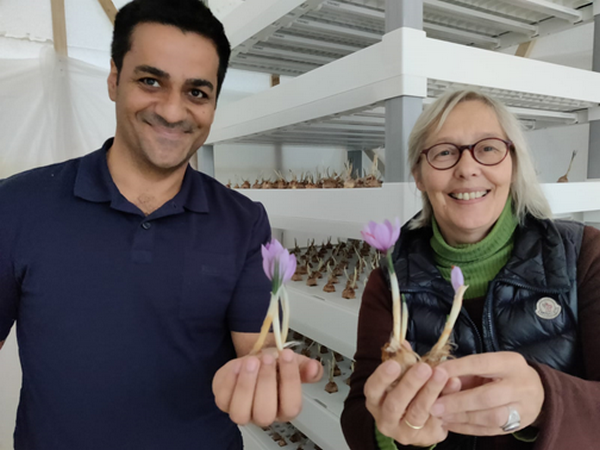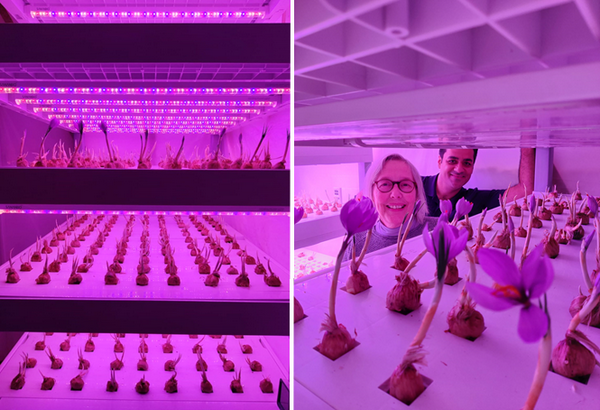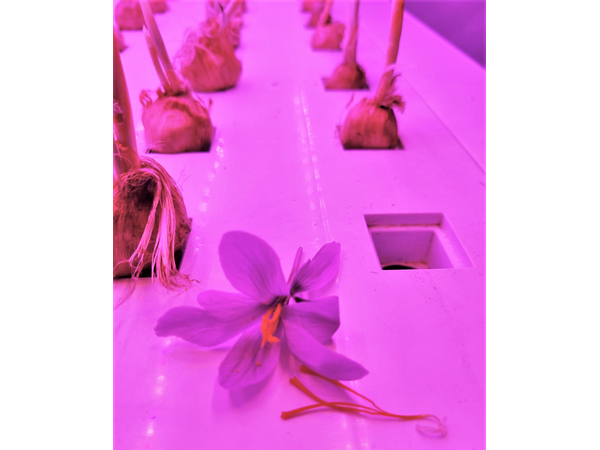Vertical farming is not quite like ordinary farming, just like saffron is not quite like ordinary crops. The Association of Vertical Farming saw this too and decided to combine the two. They have just finished their R&D project which focused on saffron. Reason enough for us to delve a little deeper into the matter and ask a few questions.
Beyond leafy greens
Of course, such a project is not simply thought up and executed during your morning coffee, especially as saffron is rarely grown indoors. Christine Zimmermann-Loesl, Chairwoman at the AVF, tells us a little about how the project started.
“We wanted to expand beyond leafy greens, so I brought in Ardalan (researcher on the project) and his family from Iran to work for us at AVF. He would teach us how to grow saffron and mushrooms in our lab,” Christine said.

Ardalan and Christine
Saffron is a very labor-intensive crop, and, moreover, highly dependent on the weather, meaning there is no guarantee of a steady yield, Christine explains. “It is hard work to harvest the flowers out in the field, and fewer and fewer workers want to do it. Growing the crops indoors, in vertical farms, could be a game-changer. We still have to wait for the final data, but I think this could be the beginning of such proper margin products entering the vertical farming industry.”
Help growers understand saffron
Normally, such an experiment is an often lengthy process of trial and error. Not so much with this project, though: “We were successful with the very first trial. It’s truly remarkable,” Christine gladly shares.
Now that the AVF has gathered the wanted data, different lights and humidity will be implemented to improve crop growth even more. The organization is planning on using all information from the given workshops in order to help growers with the experience obtained in these projects.

“In fact, we are adding a hybrid workshop to our repertoire in December, called ‘How to grow saffron indoors: First steps to your own saffron farming’. We hope to see many enthusiastic participants there.”
With only 500 flowers left to harvest, it is time for the next step in the process. The saffron is given to Chef Benjamin Chmura working at the famous Tantris restaurant in Munich, for a quality check. In the meantime, AVF is focusing its research on special varieties of mushrooms. 
“Our goal at AVF is to not only test different types of equipment, but also to explore new crops to grow indoors and raise awareness for the benefits of vertical farming. I’d say, with our success with saffron, we are headed in the right direction,” Christine concludes.

For more information:
Christine Zimmermann-Loesl, Chairwoman
[email protected]
Association for Vertical Farming
www.vertical-farming.net
